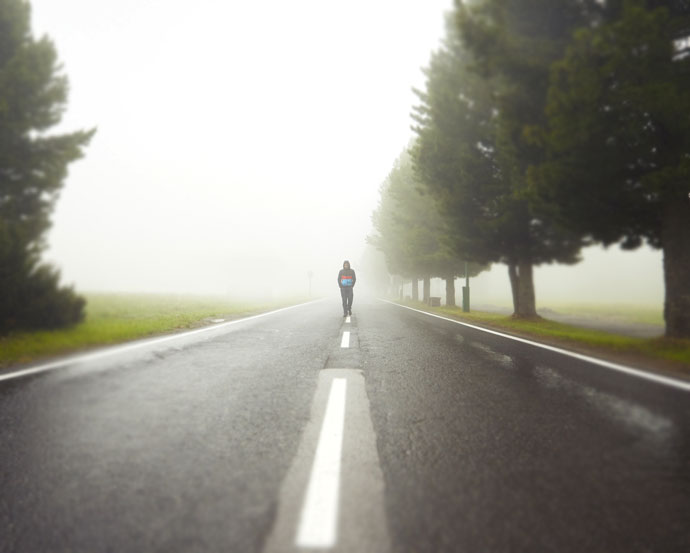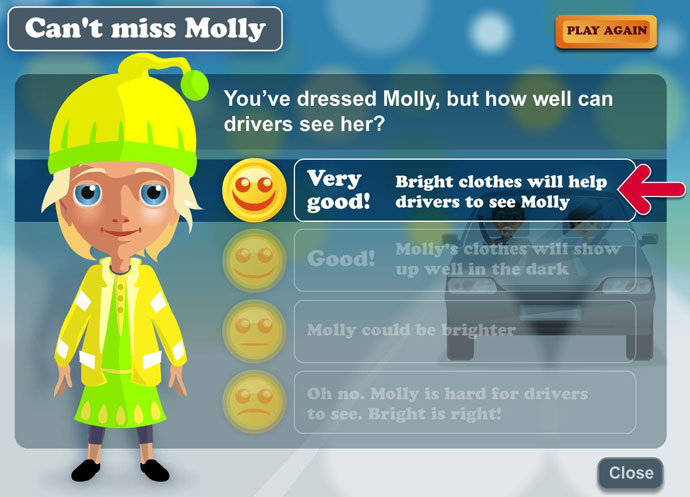
A love affair with cars and decades of apathy from politicians and planners has perpetuated a transport caste system – a back-to-front approach to how we organise our lives which sees people forced to defer to motorised traffic.
The cost of maintaining this status quo is high: Tens of thousands of people in Britain each year die in crashes and as a result of pollution; road danger prevents kids from playing outside; climate change exacerbated; social inequality perpetuated and quality of life in many areas severely diminished. So why do we put up with it?
The reasons we put up with all of this are myriad, but they start young. From the earliest age, children are given ‘alternative facts’ about the causes of road danger. We teach that the responsibility for avoiding death on the roads lies not with motorists, but with the victims themselves. The government’s Think campaign provides kids with an interactive game to dress a character called Molly in bright clothing. The accompanying story tells how a driver in a car park almost ran her down because she was wearing a black coat:
‘Just then there was a loud screech and Molly felt her dad’s strong arm pull her back. ‘Watch out!’ he shouted. Molly stumbled back and nearly fell over. A big car was right behind them. ‘Are you OK, Molly? ’ said her dad. ‘I didn’t notice that car coming.’ Molly’s heart was racing. ‘I’m all right, what happened?’ Before her dad could answer, the car door opened and the driver stepped out. He looked very pale. ‘I’m so sorry – I just didn’t see you. I wasn’t going fast, either. Are you both OK?’ Molly’s dad nodded. ‘We’re fine. And it wasn’t your fault. We should have been looking out more, especially now it’s dark.’

Is this really how we want kids to dress to when they walk beside a road?
How about drivers in car parks drive at walking pace so that if a child steps out they don’t have to screech to a halt? The fairy tale that pedestrians should dress like council workers in high-viz gear if they expect to survive takes a dark turn when it is quoted by motoring insurance companies seeking to escape their own responsibilities.
Churchill may have a friendly looking British Bulldog as its mascot, but it seems the beast is as likely to snarl rabidly as it is to chortle if the legal case brought by the insurance giant in 2013 is anything to go by.
In a bid, one assumes, to protect its bottom line on behalf of its customers, Churchill insurance is appealing against the High Court ruling that ordered it pay £5m compensation to a 16-year-old girl who was left brain-damaged after she was run over by one of its customer who was speeding at the time.
Bethany Probert was walking on a grass verge when she was struck by the car, but the insurer claimed she was partly to blame because she was not wearing a high-visibility jacket at the time.
When the case was heard in the High Court, the judge ruled that the insurance company was 100 per cent liable because the driver was speeding. However, the Court of Appeal allowed the insurers to appeal against the original ruling. The plan, it seemed, was for Churchill’s lawyers plan to tell the court Bethany should have known to wear reflective clothing because she was an experienced horse rider.
Had the appeal been heard, the test case would have decided to what extent children can be held responsible for their injuries in road crashes. However, as is often the case, and completely understandably given what they had already endured, Bethany’s parents decided to accept a lower out-of-court settlement.
The propaganda aimed at our young continues beyond school into further education.
Cycling author Carlton Reid was alerted by his daughter to an A-level physics exam paper which asks how much extra carbon dioxide is emitted as a result of cars ‘queuing’ behind a cyclist on a narrow rural road.
Reid cites it as a prime example of the insidious trope that cyclists cause air pollution.

Alternative facts: The pernicious trope that cyclists cause pollution
In a post-truth world, perhaps it should come as no surprise that cyclists are held up as the cause of pollution and children dressed in black coats are portrayed as authors of their own destruction, but little will change until we call out this kind of pernicious propaganda.
After all, as a nation, our road to Damascus will not be driven. It will be walked and cycled.
Ethical insurance
The ETA has been voted the most ethical insurance company in Britain for the second year running by the Good Shopping Guide.
Beating household-name insurance companies such as John Lewis and the Co-op, the ETA earned an ethical company index score of 89.
The ETA was established in 1990 as an ethical provider of green, reliable travel services. Twenty six years on, we continue to offer cycle insurance, travel insurance and breakdown cover while putting concern for the environment at the heart of all we do.
Mary Fisher
It makes sense for everyone to wear something bright in the dark hours. That doesn’t mean that it’s their fault if there’s an accident but the numbers of accidents will be reduced if pedestrians can easily be seen. Mind you, how many pedestrians are there in the dark hours? There are far fewer in light hours than there used to be – why? Because most people travel by car for even short distances.
Tony Williams
“Tens of thousands of people in Britain each year die in crashes.”
I believe it is under 2,000. If I am right and the author of the article is wildly wrong, how much confidence can we have in anything else it contains?
The ETA
You’ve misquoted us. The line reads ‘Tens of thousands of people in Britain each year die in crashes and as a result of pollution’
Andy G
The quote that Tony Williams (above) cites should really be the other way round, particularly as the thrust of the article is about “pernicious propaganda”. I read it as Tony did at first, and immediately went on to check the data (1713 deaths in 2013 due to road accidents according to the DfT: https://www.gov.uk/government/publications/annual-road-fatalities). To have the sentence the way round it is, is (presumably deliberately) misleading and undermines the integrity of the article!
Ross C
The article is spot on – I commute past two schools in the morning and the traffic is unbelievable.
Parents should have more faith in their children and let them walk.
A level students should calculate how much carbon dioxide is emitted by cars queueing outside schools to drop their precious cargo off.
Tony Williams
You’re right, I did misread it, and I’m sorry and should have been more careful.
In the article this week about transport in London, the figures for deaths caused by nitrous oxide are 20,000 a year and 29,000 from particulates, in Britain as a whole.
I think it is fair to say that if you refer to a total number of deaths, and place first among the causes one that leads to less than 5 per cent of them, a misleading impression may be conveyed.
whobiggs
“Nitrous oxide”? Is that right? I believe that’s the stuff racers use to add a turbo like boost of power isn’t it?
Stan Best
Please wear something white when walking at night. I’m not point scoring taking sides or taking issue with this article, just do it for every ones sake, thanks.